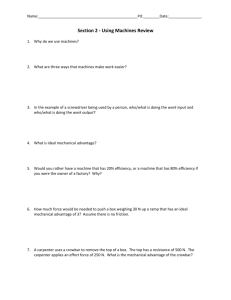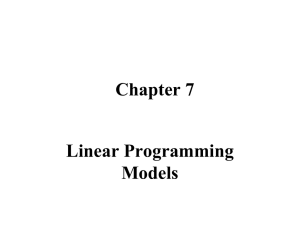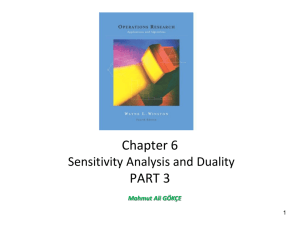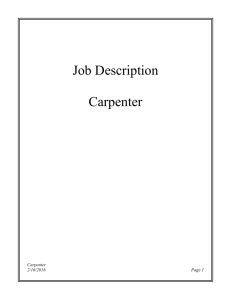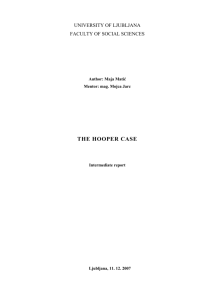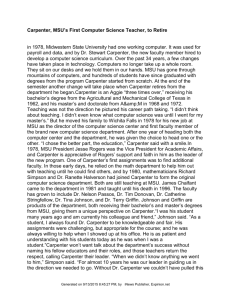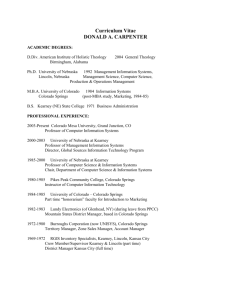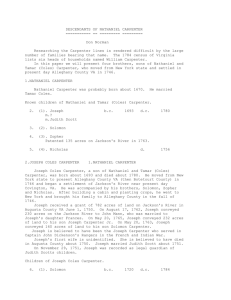The Dual Problem: Its Construction and Economics Implications
advertisement
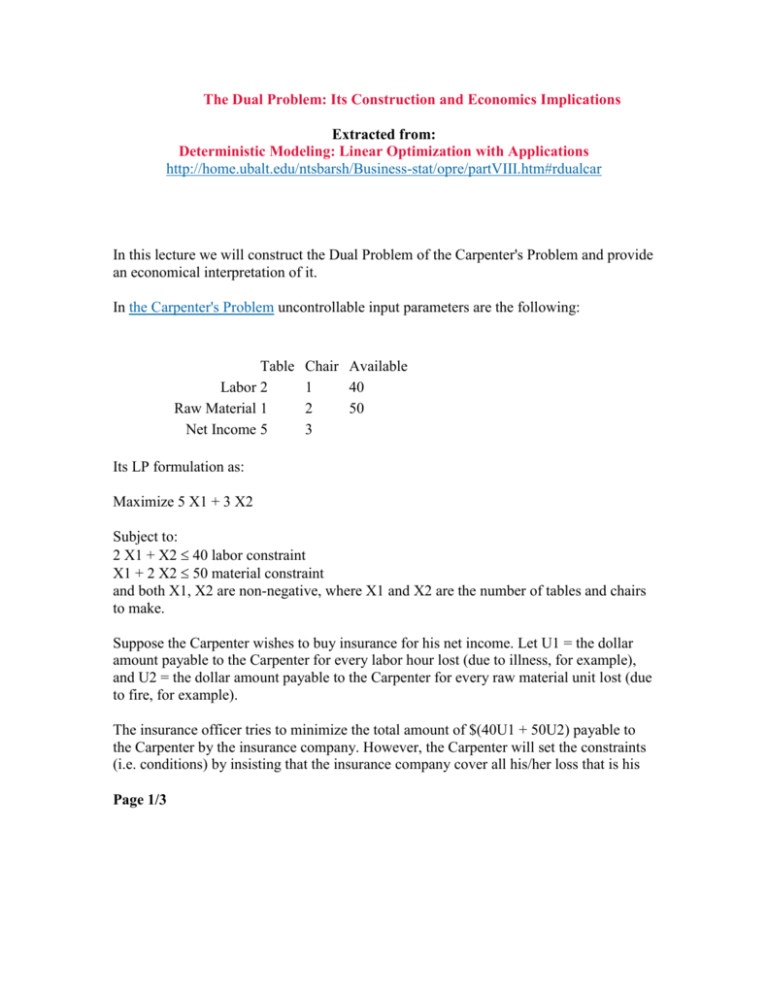
The Dual Problem: Its Construction and Economics Implications Extracted from: Deterministic Modeling: Linear Optimization with Applications http://home.ubalt.edu/ntsbarsh/Business-stat/opre/partVIII.htm#rdualcar In this lecture we will construct the Dual Problem of the Carpenter's Problem and provide an economical interpretation of it. In the Carpenter's Problem uncontrollable input parameters are the following: Table Labor 2 Raw Material 1 Net Income 5 Chair Available 1 40 2 50 3 Its LP formulation as: Maximize 5 X1 + 3 X2 Subject to: 2 X1 + X2 40 labor constraint X1 + 2 X2 50 material constraint and both X1, X2 are non-negative, where X1 and X2 are the number of tables and chairs to make. Suppose the Carpenter wishes to buy insurance for his net income. Let U1 = the dollar amount payable to the Carpenter for every labor hour lost (due to illness, for example), and U2 = the dollar amount payable to the Carpenter for every raw material unit lost (due to fire, for example). The insurance officer tries to minimize the total amount of $(40U1 + 50U2) payable to the Carpenter by the insurance company. However, the Carpenter will set the constraints (i.e. conditions) by insisting that the insurance company cover all his/her loss that is his Page 1/3 net income since he/she cannot make the products. Therefore, the insurance company problem is: Minimize 40 U1 + 50 U2 Subject to: 2U1 + 1U2 5 Net Income from a table 1U1 + 2U2 3 Net Income from a chair and U1, U2 are non-negative. Implementing this problem on your computer package shows that the optimal solution is U1 = $7/3 and U2 = $1/3 with the optimal value of $110 (the amount the Carpenter expects to receive). This ensures that the Carpenter can manage his life smoothly. The only cost is the premium that the insurance company will charge. Shadow Price Unit of Measure: Notice that the unit of measure of the RHS shadow price is the unit of measure of the primal objective divided by the unit measure of the RHS. For example for the Carpenters problem, U1 = [$/week] / hours/week] = $/hour. Thus U1 = 7/3 $/hour, and U2 = 1/3 $/unit of raw material. As you can see, the insurance company problem is closely related to the original problem. In OR/MS/DS modeling terminology, the original problem is called the Primal Problem while the related problem is called its Dual Problem. In the Carpenter's Problem and its Dual Problem, the Optimal Value for both problems is always the same. This fact is referred to as Equilibrium (taken from the complementarily theory, equilibrium of economical systems, and efficiency in Pareto's sense) between the Primal and the Dual Problems. Therefore, there is no duality gap in linear programming. Managerial Round-off Errors: You must be careful whenever you round the value of shadow prices. For example, the shadow price of the resource constraint in the above problem is 8/3; therefore, if you wish to buy more of this resource, you should not pay more than $2.66. Whenever you want to sell any unit of this resource, you should not sell it at a price below $2.67. A similar error might occur whenever you round the limits on the sensitivity ranges. One must be careful because the upper limit and lower limit must be rounded down and up, respectively. Computation of Shadow Prices: You know by now that the shadow prices are the solution to the dual problem. Here is a numerical example. Page 2/3 Compute the shadow price for both resources in the following LP problem: Max -X1 + 2X2 S.T. X1 + X2 5 X1 + 2X2 6 and both X1, X2 non-negative The solution to this primal problem (using, e.g., the graphical method) is X1 = 0, X2 = 3, with the leftover S1 = 2 of the first resource, while the second resource is fully utilized, S2 = 0. The shadow prices are the solution to the dual problem: Min 5U1 + 6U2 S.T. U1 + U2 -1 U1 + 2U2 2 and both U1 and U2 are non-negative. The solution to the dual problem (using, e.g., the graphical method) is U1 = 0, U2 = 1 which are the shadow prices for the first and second resource, respectively. Notice that whenever the slack/surplus of a constraint is non-zero, the shadow price related to that RHS of that constraint is always zero; however, the reverse statement may not hold Page 3/3

